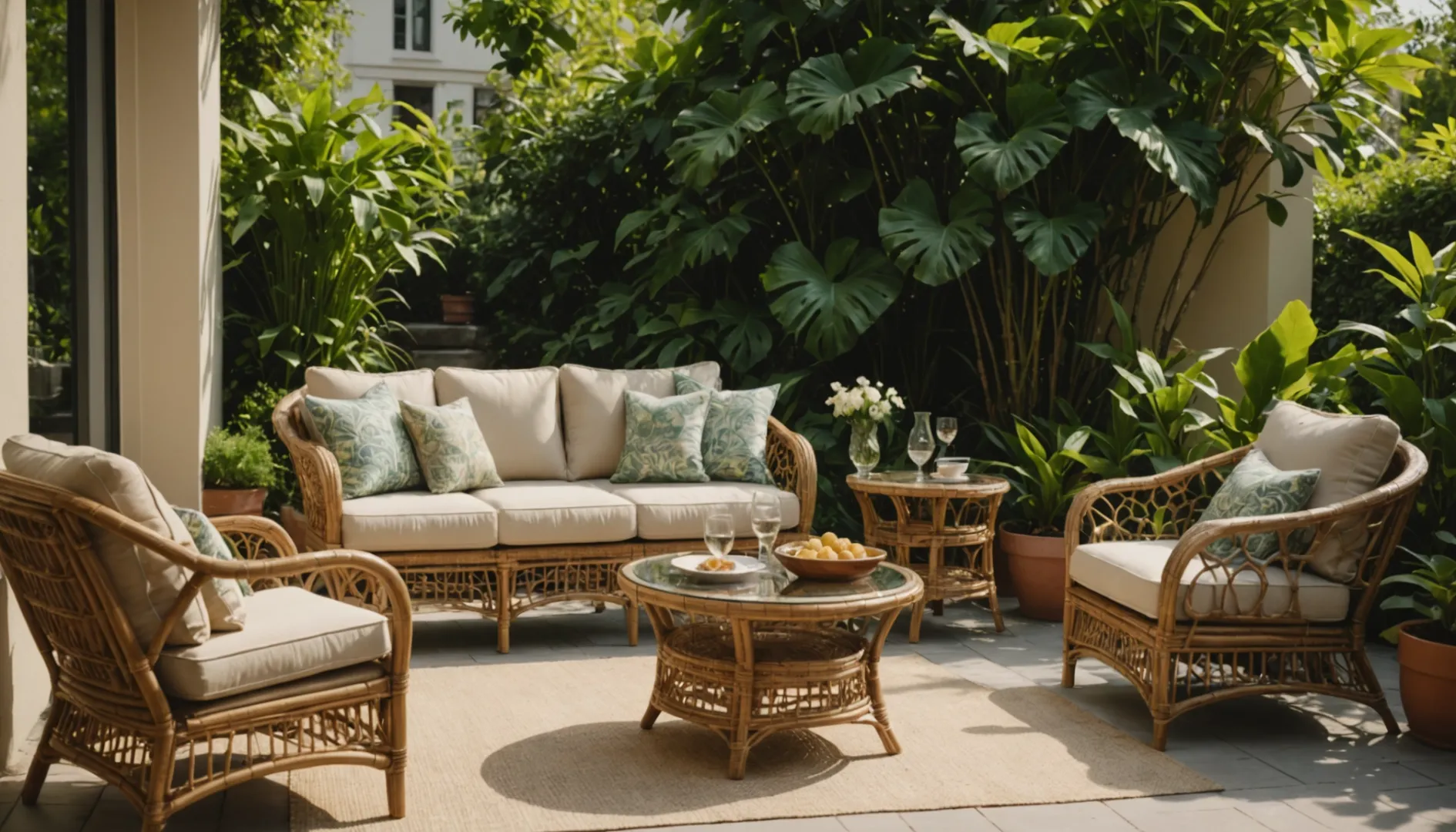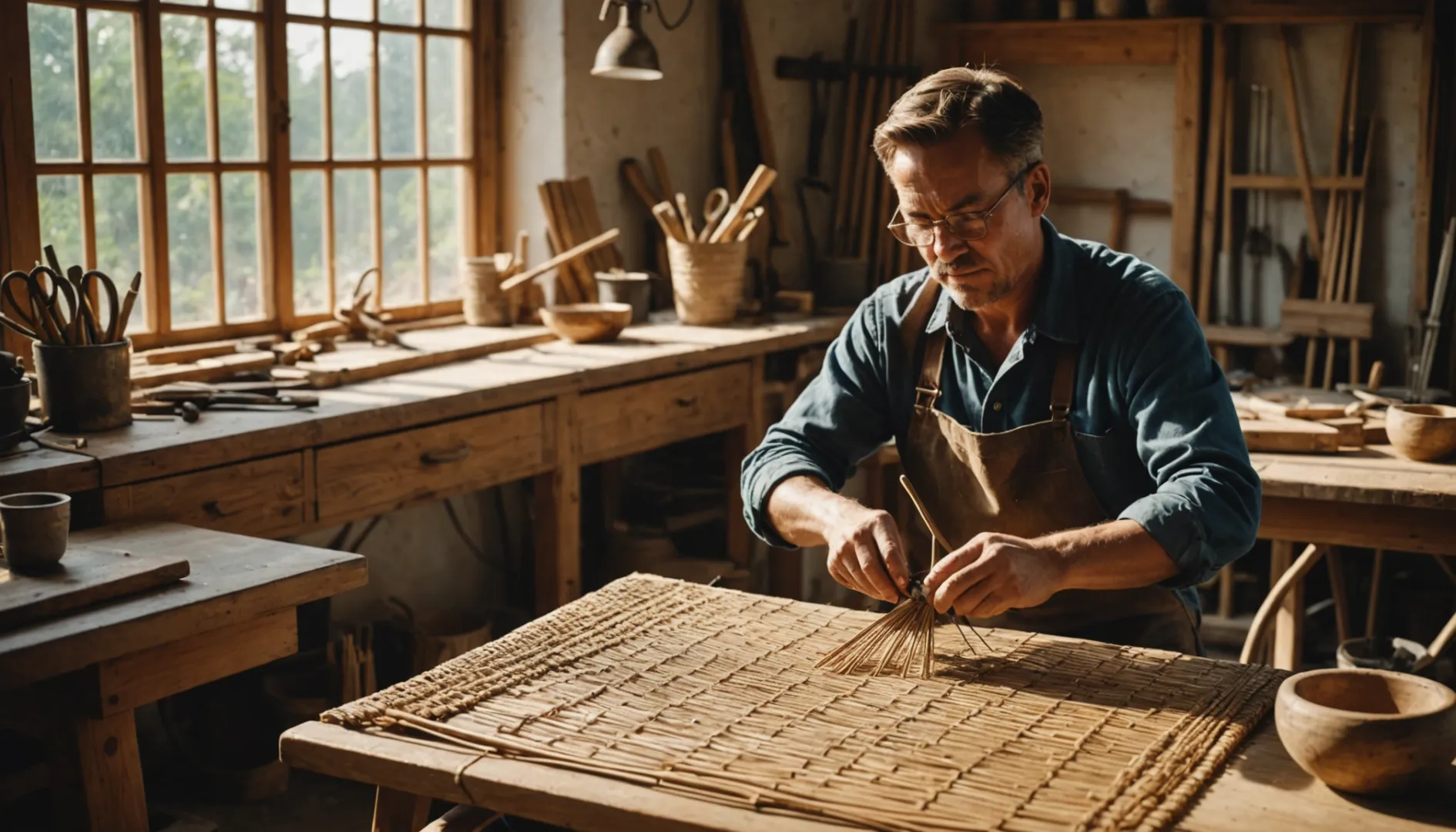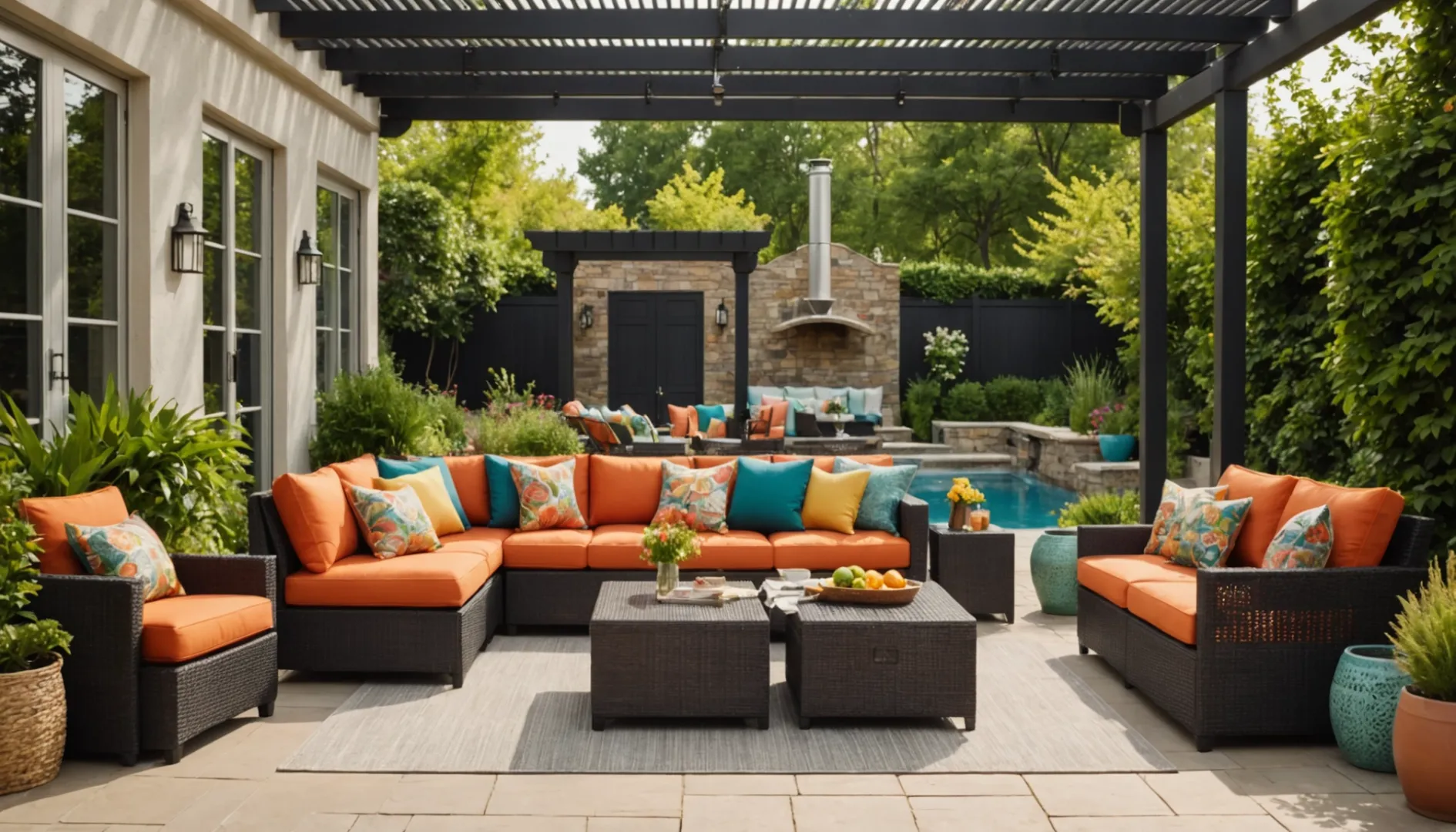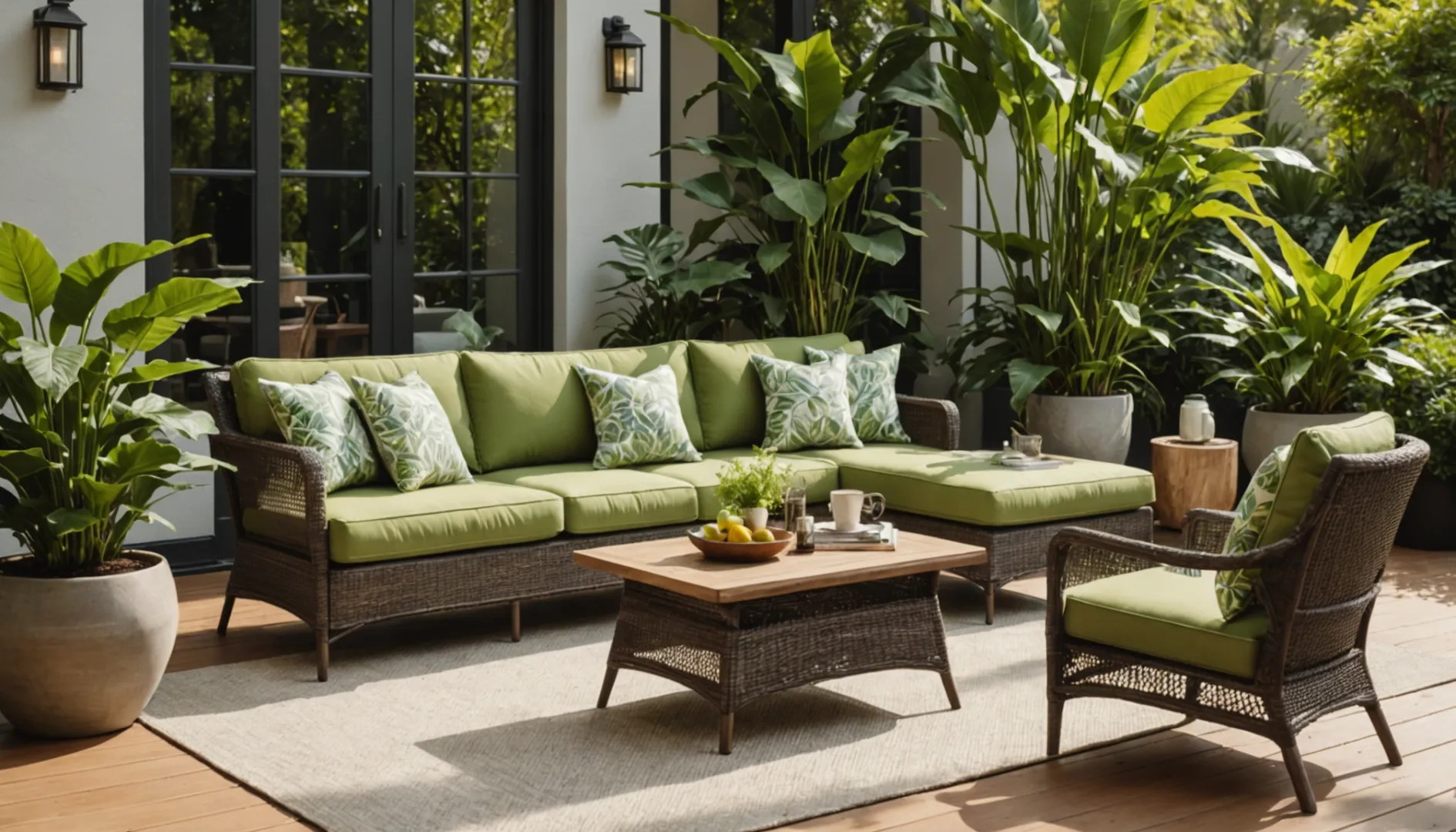
I remember the first time I stumbled upon a beautiful rattan chair and wondered why it came with such a hefty price tag.
Rattan furniture is expensive due to the labor-intensive process of harvesting and crafting the material, its quality and durability, and high market demand. Its unique design and versatility also contribute to its premium pricing.
At first glance, the price of rattan might seem steep, but when I dug deeper, it all started to make sense. It’s not just about aesthetics—though let’s face it, rattan pieces are stunning. The journey from raw material to that chic piece in your living room involves meticulous craftsmanship. Knowing this made me appreciate each curve and weave more, realizing that every piece is a testament to skill and tradition.
As someone who’s always on the lookout for durable and stylish furniture, I found that rattan offers a level of durability that isn’t always easy to find. Not only does it stand up to the test of time, but its versatility means it can blend seamlessly with different decor styles. Investing in rattan feels like buying a piece of art that grows in value over time, both emotionally and materially.
Rattan furniture is more expensive due to its durability.True
Rattan's natural resilience and longevity contribute to higher costs.
Rattan furniture is cheaper than most wooden furniture.False
Rattan often costs more due to craftsmanship and material sourcing.
Why Are Rattan Furniture Prices Rising?
Ever wondered why that chic rattan chair you’ve been eyeing has such a hefty price tag? It’s more than just its stylish design.
Rattan furniture costs are on the rise due to heightened demand for raw materials, a shortage of skilled labor, stringent environmental regulations, and increasing globalization and transportation expenses. By grasping these elements, I can make more informed purchasing choices.

Rising Demand for Raw Materials
I remember the first time I fell in love with a piece of rattan furniture. Its natural, rustic charm seemed to beckon me from across the room. But I’m not alone in this admiration—many people are now seeking out rattan for its eco-friendly vibe and sustainable appeal. This trend has sent global demand for rattan soaring, causing shortages and driving up the cost of raw materials. It’s like that time when everyone wanted the same limited-edition sneaker—I guess we all just want a bit of nature in our homes, impacting furniture costs1.
Labor Shortages and Production Challenges
Crafting rattan furniture is truly an art form, requiring skilled hands to weave those intricate patterns we adore. Yet, finding artisans who have mastered this craft is becoming increasingly difficult. It reminds me of the time my favorite local bakery couldn’t keep up with orders because everyone was moving to the city for corporate jobs. The same thing is happening here—urbanization is drawing potential craftspeople away, leading to a shortage of skilled labor. Naturally, this scarcity pushes wages up and, as a result, increases the cost of finished products2.
Environmental Regulations Impact
I once tried to grow a small herb garden on my windowsill, only to realize how much care goes into sustainable practices. Similarly, rattan harvesting and production must follow strict environmental regulations. Manufacturers have to ensure minimal impact on our planet, which often means higher operational costs. These costs are passed along to consumers like you and me.
Globalization and Transportation Expenses
The globalization of rattan furniture means it might travel thousands of miles before reaching my doorstep. Each piece carries not just style but also transportation costs that have escalated with geopolitical shifts and trade tariffs. I think back to the time I ordered a vintage lamp online; by the time it arrived, the shipping had doubled its price! That’s what’s happening with rattan too—moving it around the world adds layers to the cost structure3.
Quality and Craftsmanship
Finally, there’s something timeless about a beautifully crafted piece of furniture. The quality of craftsmanship and materials in high-end rattan pieces is unparalleled, offering durability and aesthetic pleasure that justify their premium price tags. It’s like comparing a handmade sweater from grandma to a mass-produced one—there’s just no contest. So when considering that luxurious rattan lounge chair, I need to weigh its cost against its quality and the lasting joy it brings.
Rattan furniture prices rise due to increased labor costs.True
Higher wages in producing countries lead to increased furniture costs.
Rattan furniture is cheaper than plastic alternatives.False
Rattan is generally more expensive due to natural material and craftsmanship.
How Does the Craftsmanship Affect Rattan Furniture Pricing?
Have you ever gazed at a piece of rattan furniture and wondered why it’s priced like a work of art? It’s all about the craftsmanship.
The craftsmanship behind rattan furniture plays a crucial role in its pricing, influenced by the quality of materials, intricate designs, and the skillful, labor-intensive techniques artisans use to create unique, durable pieces.

The Role of Material Selection
I remember my first experience shopping for rattan furniture, naively assuming that all rattan was created equal. But then, I learned about premium-grade rattan4, which artisans specifically choose for its strength and durability. This type of rattan is not just picked off a shelf; it’s sourced sustainably, making it both rare and pricey. Knowing that the raw material is top-notch gave me confidence in my investment.
Intricate Designs and Techniques
The magic really happens in the weaving. I once watched a craftsman at work, hands moving with the rhythm of a seasoned artist. The handwoven designs5 are intricate, each pattern a testament to countless hours of labor. Machines can’t replicate these human touches; it’s the subtle imperfections that make each piece unique and structurally sound. It’s like owning a piece of art where every weave tells a story.
Labor Intensity and Artisan Expertise
Crafting rattan furniture is no walk in the park. The artisans I’ve met are like storytellers, each piece a narrative crafted with skill and precision. They understand rattan like an old friend, knowing how to coax it into beautiful shapes without losing integrity. This artisan craftsmanship6 doesn’t come cheap, but it’s worth every penny for something that lasts a lifetime.
Comparison with Other Materials
When I compared rattan with materials like bamboo or metal during my furniture hunt, the differences were striking. Bamboo can be mass-produced by machines, but rattan requires a hands-on approach7. Each piece reflects the artisan’s personal artistry, offering a bespoke quality that sets it apart in terms of both price and perceived value. It’s like comparing a tailor-made suit to an off-the-rack one – each has its place, but only one truly fits your personality.
High craftsmanship increases rattan furniture prices.True
Skilled artisanship enhances durability and aesthetic, raising value.
Rattan is more expensive than bamboo due to scarcity.False
Both materials have similar availability; craftsmanship affects cost more.
Is Rattan Furniture More Durable Than Other Types?
Ever wondered if rattan furniture could be the perfect mix of style and durability for your home? Let’s find out together.
Rattan furniture, especially when treated, boasts impressive durability and weather resistance, often outlasting many traditional materials.

Understanding Rattan’s Natural Resilience
The first time I came across rattan furniture, I was in a cozy little café that had the most inviting outdoor seating. It was a rainy day, yet the furniture looked like it hadn’t aged a day. Rattan is naturally resilient—it’s a vine-like plant from Southeast Asia with a solid core and flexible texture. This makes it perfect for handling the ups and downs of daily life, whether indoors or outdoors. Unlike wood, which can crack and splinter over time, rattan holds its ground (or rather, its shape) remarkably well. With a bit of TLC, rattan can brave the elements far better than many furniture types8 I’ve encountered.
Comparing Rattan with Synthetic Options
Now, if you’ve ever been torn between the charm of natural rattan and the practicality of synthetic options, you’re not alone. Synthetic rattan—resin wicker—caught my eye because it cleverly mimics its natural counterpart but takes durability up a notch. I remember visiting a friend’s patio where synthetic rattan furniture looked as stylish as it did functional. It doesn’t just look good; it’s built to withstand sun and rain without batting an eye. While the quality during manufacturing can make or break its durability, I’ve found that good synthetic rattan can outlast untreated natural versions, especially in harsh weather.
Maintenance: A Key Factor in Durability
In my experience, how you care for your rattan furniture can be the game-changer in its lifespan. Regular cleaning and keeping it safe during harsh weather have been my go-to strategies. When I first bought my rattan set, a friend advised applying protective varnishes to make it even more resistant to moisture and sunlight. It worked wonders! Sure, other materials like metal may seem lower maintenance, but trust me—nothing beats the long-term payoff of well-treated rattan against rust-prone alternatives.
Considering the Environmental Impact
When I’m choosing furniture, I can’t help but think about the planet. Rattan furniture hits the sweet spot for me because it’s eco-friendly—it grows faster than most hardwoods and is renewable. This makes it a winner in my book over synthetic alternatives made from plastics, which don’t always align with my environmental values. Balancing the need for durability with eco-conscious choices is a big deal for me, and it might be for you too if you’re torn between natural and synthetic9 options.
Rattan furniture is more weather-resistant than wicker.True
Rattan, especially synthetic, withstands elements better than traditional wicker.
Bamboo furniture requires less maintenance than rattan.False
Rattan generally requires less maintenance compared to bamboo, which can crack.
Are There Affordable Alternatives to Rattan Furniture?
Have you ever swooned over rattan furniture but winced at the price? There are budget-friendly alternatives that offer style and functionality.
Yes, there are affordable alternatives to rattan furniture, such as synthetic wicker, bamboo, and resin. These materials mimic the natural look and feel of rattan, providing style and durability without the high cost.

Understanding Rattan and Wicker
Before diving into alternatives, it’s essential to differentiate between rattan10 and wicker. I remember the first time I fell in love with a piece of rattan furniture. It was a beautiful chair that screamed elegance, but when I checked the price tag, I nearly dropped it. So, I started my quest to understand what makes rattan so special. Turns out, rattan is a vine-like plant material, while wicker is actually a weaving technique that can be applied to different materials, including rattan. Knowing this distinction helps when exploring other options.
Synthetic Wicker: The Popular Choice
One of the most common alternatives to natural rattan is synthetic wicker. My patio needed a makeover, and synthetic wicker was my go-to. Made from materials like polyethylene, synthetic wicker is designed to withstand outdoor conditions better than natural rattan. It’s not only more affordable but also comes in a variety of colors and styles—like the vibrant teal set that perfectly matched my outdoor cushions. With synthetic wicker, I didn’t have to sacrifice style or my budget.
Bamboo: The Eco-Friendly Alternative
If you’re like me and care about the environment, bamboo offers another great option worth considering. While it may not perfectly replicate the look of rattan, its rustic charm is undeniable. Bamboo is lightweight yet strong and environmentally friendly—an added bonus for eco-conscious consumers like myself who loved how bamboo pieces added a natural vibe to my living room without costing a fortune.
Resin and Plastic Options
For those who prioritize durability, resin or plastic options might be perfect. These materials have become increasingly popular due to their durability and resistance to weather conditions. They are molded to mimic the appearance of traditional wicker or rattan but are much easier to maintain. I chose a resin dining set for my backyard—no worries about rain or fading in the sun—and it still looked chic.
Shopping Tips for Budget-Friendly Furniture
When searching for affordable alternatives, patience pays off; consider shopping during sales or at discount retailers. Sales are my best friend; I often browse online platforms for competitive prices11. Keep an eye out for warehouse sales or clearance events where you can snag high-quality pieces at reduced prices—I’ve scored some of my favorite pieces this way! It’s all about timing and knowing where to look.
Synthetic wicker is more durable than natural rattan.True
Synthetic wicker resists weather and moisture better, enhancing durability.
Natural rattan is cheaper than synthetic alternatives.False
Synthetic materials are often less expensive due to easier manufacturing.
Conclusion
Rattan furniture’s high cost stems from labor-intensive craftsmanship, quality materials, rising demand, and environmental regulations. Its durability and unique design make it a valuable investment for stylish decor.
-
Understand why rattan’s popularity is increasing in global markets. ↩
-
Explore how labor dynamics influence production costs. ↩
-
Learn about the role of logistics in pricing strategies. ↩
-
Learn why premium-grade rattan is favored for its quality and durability. ↩
-
Discover how intricate weaving impacts both aesthetics and pricing. ↩
-
Explore the skills that differentiate artisan-made from mass-produced furniture. ↩
-
Understand why rattan requires more skill compared to machine-processed bamboo. ↩
-
Explore detailed comparisons between rattan and wood durability. ↩
-
Learn about the environmental impact of natural versus synthetic rattan. ↩
-
Understand the distinction to make informed purchasing decisions. ↩
-
Discover online retailers offering budget-friendly furniture deals. ↩

